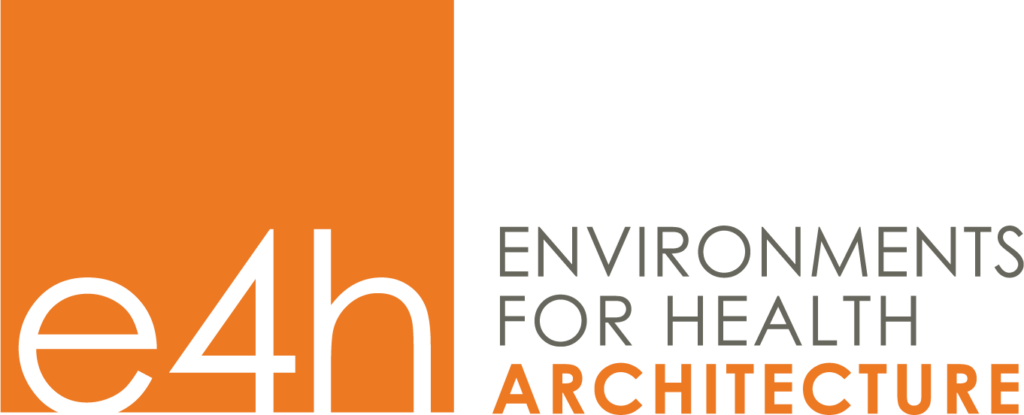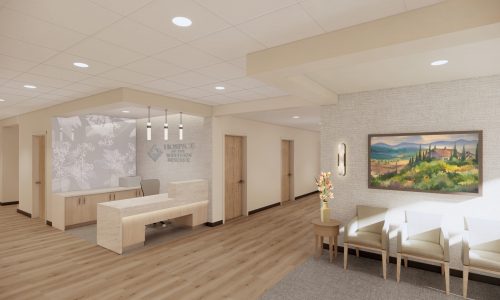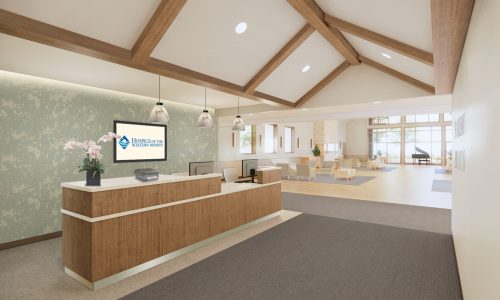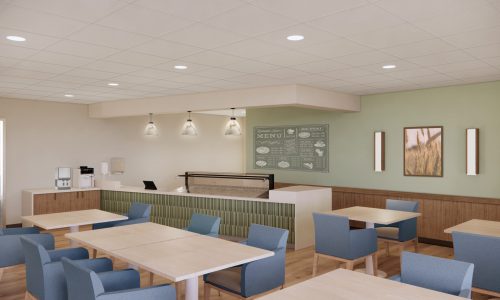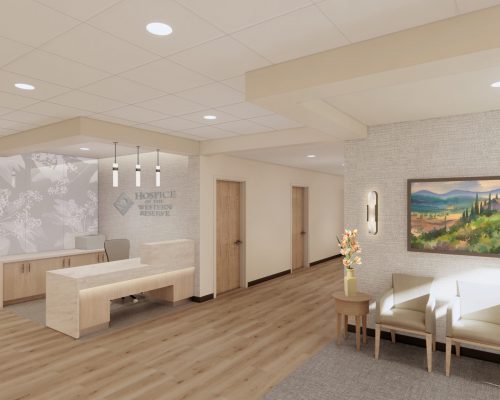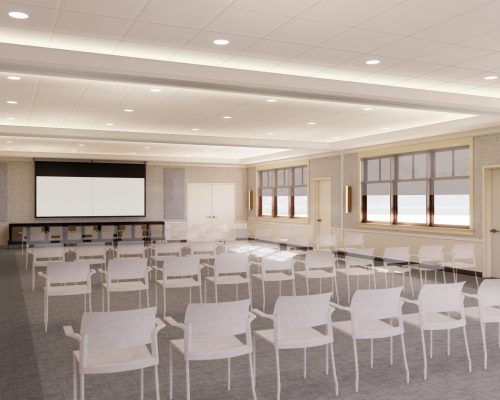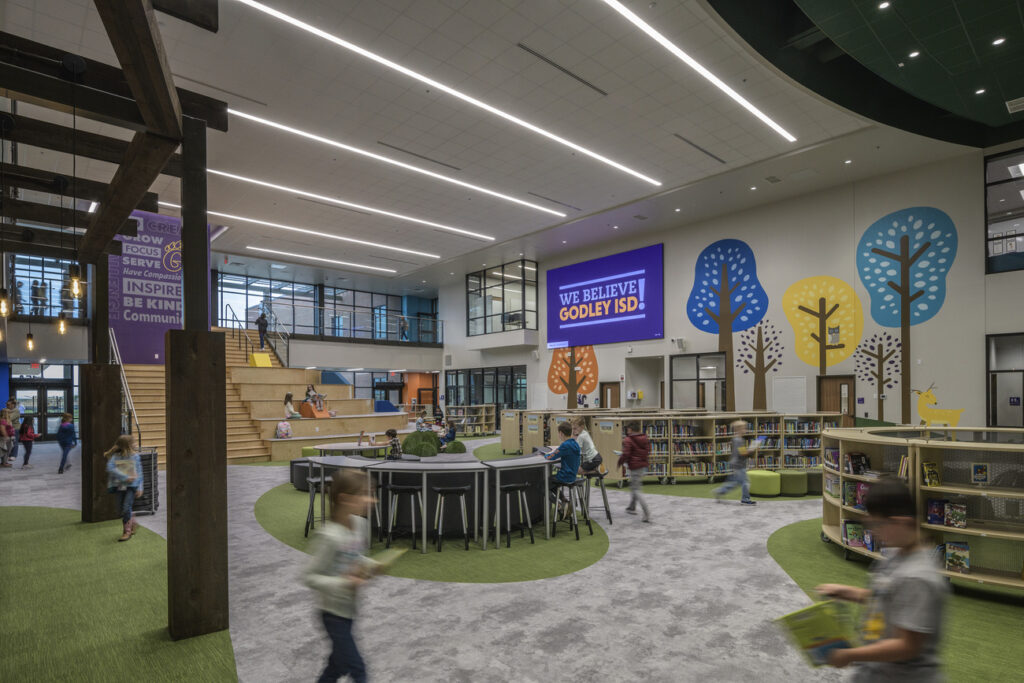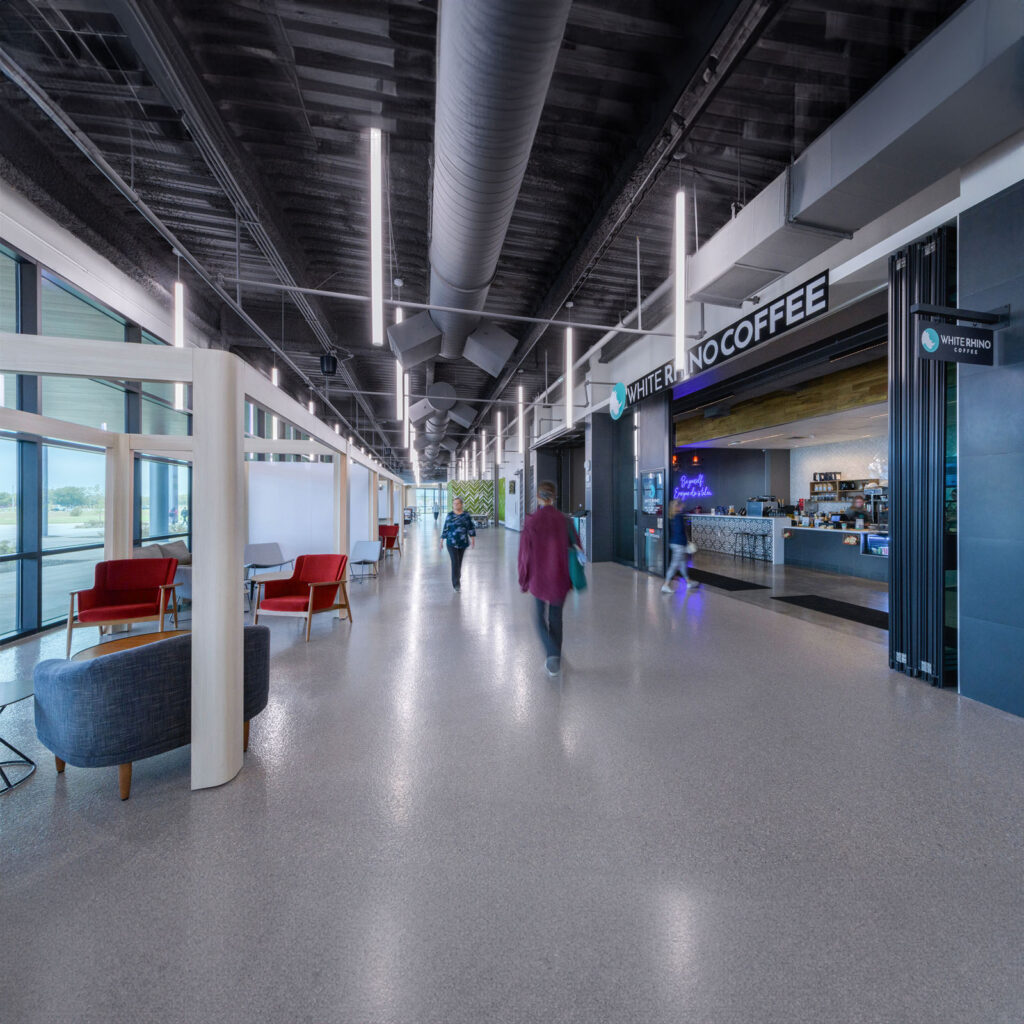Situated on the south shore of Lake Erie in Northern Ohio, Hospice of the Western Reserve’s new Hospice Care & Community Center delivers comfort, compassion, and critical services for patients, who often arrive in the final days of their end-of-life journey. E4H took a human-centric approach to sustainability for the LEED Silver project, holistically integrating the facility with its natural environment to deliver an optimal experience for staff, patients, their families, and members of the surrounding community.
Respite, Inside and Out
The project provides ample opportunity for respite, giving individuals and groups space to process the sensitive circumstances that bring them to the Hospice Care & Community Center. Each of the 32 patient rooms opens to a private patio that overlooks the lake. Around the facility are rooms for families to find privacy, as well as consultation rooms that double as places to slip away for moments of solace. A multipurpose wellness area for staff also offers space for respite.
Central to the facility is the great room, a place for gathering and rest featuring several seating areas, a fireplace, a large aquarium, and a wall of glass with expansive views to the lake and two courtyards. One is a play space for children, and the other is a quiet, contemplative outdoor space, which the facility’s meditation room looks onto. Staff also retain views of the lake from the breakroom, and they have access to their own patio on the staff side of the building.
The great room also connects to a patio that serves as the centerpiece of the outdoor amenities. Here, the homelike comforts of the interior seating areas continue to the outside, with an overhang for shade, supported by an exposed truss system that filters light and frames the outdoor space.
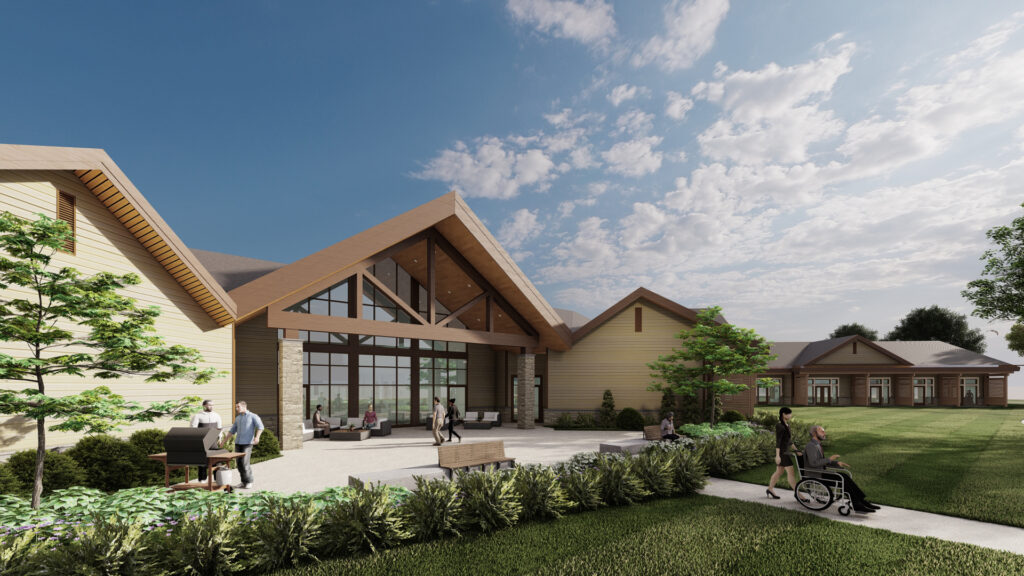
Sustainable Efficiency
The wood-framed facility is high performing, achieving a level of energy efficiency that’s 40% better than code. The building’s envelope is a key component, including an insulated Zip panel, five and a half inches of interior insulation, exterior insulation, high-performing fiberglass windows, and an R50 roof. Beyond cost effective and energy efficient, these components keep patients, families, and staff cozy in an environment that sees an abundance of wind coming off the lake.
With a cooling tower and heat pumps throughout, the efficient MEP system plays a significant role in reducing energy usage. Additionally, handwashing stations and toilets are all water efficient.
Healthy Indoor Air Quality
Low-emitting materials were a priority for the project. Paints, finishes, and all other interior materials avoid harmful VOCs and off-gassing. Products with Health Product Declarations were used throughout, meaning they were certified for a lack of chemicals of concern not only before installation, but also tested for air quality after. All air handling equipment uses air filters of the highest quality.
Conscientious Waste Management
In line not only with LEED but also environmental stewardship, the project team closely monitored construction waste. Contracting with a waste management company that sorts and recycles construction debris, we minimized the amount of material introduced to the waste stream. By virtue of E4H setting it as a priority, our contractors remained extra vigilant in reducing waste.
Comforting, Aesthetically Pleasing Environment
Key to E4H’s approach to sustainability is creating a holistically comforting experience through design, right down to the quality of noise and light. To that end, the facility features noise-reducing ceilings, as well as an acoustic panel in patient rooms that doubles as a tack wall for personal mementos. Consequently, the sounds throughout all spaces are soft and calm.
Daylighting was also a key consideration. Glazing throughout the facility not only offers generous views to courtyards, Lake Erie, and the extensive landscaping, it also allows the entrance of ample natural light into all spaces.
These features and more helped the project achieve LEED status, representing a research-backed approach to creating a healthy, sustainable environment.





